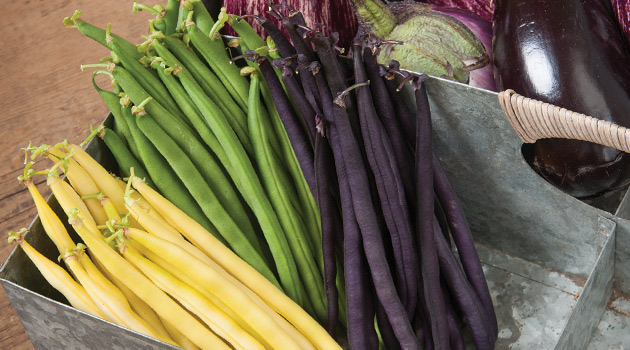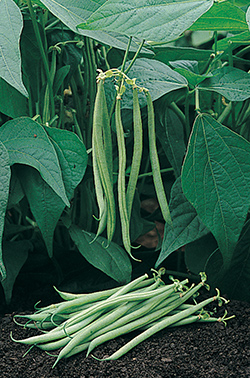- Types of Beans | Bean Basics From Johnny's Selected Seeds
- Bush Bean Varieties | Comparison Chart (PDF)
- Bean FAQs
- Bush Beans | Key Growing Information
- French Filet Beans | Key Growing Information
- Fresh Shell Beans | Key Growing Information
- Fava Bean | Key Growing Information
- Lima Bean | Key Growing Information
- Pole Bean | Key Growing Information
- Soybean | Key Growing Information
- Video: How to Grow Bush Beans • From Seed to Harvest
- Video: High-Value Crops & Varieties for Your Garden • Tutorial with Niki Jabbour
- How to Grow Pole Beans • From Seed to Harvest
- About Pole Beans | 4 Steps to Success: Select Varieties, Plant Seed & Set Up Your Trellis
- About Snap, String & Green Beans | Johnny's Selected Seeds
Bean FAQs
View All Our Beans…
What do we mean by "Halo Blight-Free" seed?
Halo blight is a seed-borne bacterial disease that can be a major problem for bean growers. It also can survive on bean plant "trash" or debris. We source our bush beans from Western states, where the disease is not known to occur.
What purpose do inoculants serve?
Inoculants contain bacteria that colonize the roots of plants in the legume (bean) family, stimulating the formation of nitrogen-producing nodules, wherein atomospheric nitrogen can be "fixed" into a nutrient form that is usable by plants. (To learn more, see our Inoculant Tech Sheet.)
Why is bean seed color important?
Dark seeds germinate better in cool soils than white seeds.
Are some beans more heat tolerant than others? Why?
Yes. Heat tolerance in beans means that they set pods better in hot weather. This is a genetically-controlled trait for which beans can be selected.
Why the adage to "Pick your beans in the afternoon"?
Picking after the plants' leaves dry minimizes the spread and impact of disease on wet beans. Like most plant pathogens, bacterial blight (Xanthamonas phaseoli), halo blight (Pseudomonas phaseolicola), and bacterial brown spot (Pseudomonas syringae pv. syringae) can be more easily spread at any time the plants are wet, as they typically are with the morning dew.
Do purple beans stay purple when cooked?
With cooking, purple beans will generally turn green (although a hint of burgundy may remain for some colored beans, depending upon the cooking method used).



